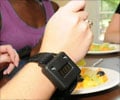“SMART”, a two-year-old controlled trial was developed as an intervention to promote weight loss in overweight/obese young adults.

- Obesity is the leading cause of death among approximately 2.8 million people every year.
- Controlled weight loss could be achieved by nutritional, pharmacological and/or surgical treatments.
- Social Media and Mobile technologies could serve as useful tools that aid weight loss and weight maintenance by being cost-effective and easy-to-use
- A 2-year-old randomized controlled trial “SMART" (A Social and Mobile Weight Control Program for Young Adults) has been designed to develop an intervention to promote weight loss in overweight/obese young adults.
The authors recruited students from colleges and universities in order to evaluate the effects of SMART on the status of their weight and other behavioral, metabolic, and psychosocial outcomes during the 2-year period. The authors sought to evaluate between condition differences in weight status at the end of 2 years.
The study also aimed at assessing the impact of the SMART intervention at 6, 12, 18 and 24 months on the following criteria:
- Quality of life
- Diet
- Depression
- Physical activity
- Sedentary behaviors
- Blood pressure levels
- Waist circumference
- Differences in weight status
- Level of satisfaction
- The amount of use of the intervention components.
The participants enrolled in the study were healthy young English-speaking adults (18 to 35 years old) of both genders who were available for a 2-year intervention. They ought to be Facebook users or those who were willing to use Facebook. They should own a personal mobile phone, a PC and should be able to use mobile apps and social media. They should also be willing to attend required research measurement visits in San Diego over the 24 months.
The exclusion criteria for the participants included:
- Those who had sleep apnea, orthopedic problems, eating disorder, psychiatric problems, cancer and diabetes.
- Those with a BMI of less than 25 kg/m2 or greater than 35 kg/m2.
- Those who were pregnant, lactating, breastfeeding, under medications.
- Non-English speaking individuals and those who had enrolled in other such programs.
- The mean age of participants was 22.7 years.
- Mean BMI at baseline was 29.0 kg/m2.
- At 24 months, there was no significant difference between the groups. However, the intervention group weighed slightly lesser than the other group at 6 months.
- Rapid and excessive weight loss could be one serious adverse event in the intervention group.
References:
- SMART: A Social and Mobile Weight Control Program for Young Adults (SMART) - (https://clinicaltrials.gov/show/NCT01200459)















